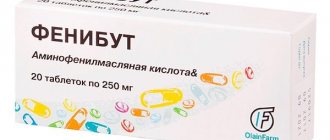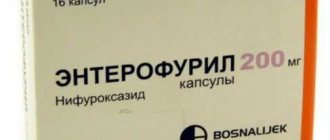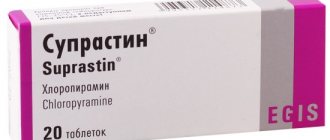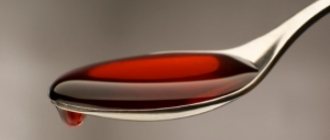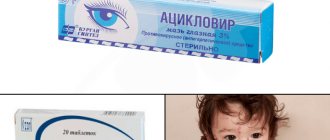Indications
Prescribed in the following cases:
- Osteoporosis;
- Rickets (caused by a lack of vitamin D);
- The emerging need for this substance during the period of active growth;
- Hyperphosphatemia;
- Diarrhea;
- Lack of it in food;
- Allergy;
- Hives;
- Bleeding;
- Liver diseases;
- Asthma;
- Excessive excretion of trace elements from the body;
- Bone fracture;
- Tuberculosis;
- Dystrophy;
- Spasmophilia;
- Frequent ARVI;
- Blood clotting diseases.
A comprehensive intake of vitamin D and calcium also strengthens the nervous system and normalizes children's sleep. It is better to take the drug in the evening; deformation processes in bone tissue take place at night.
Well-known to many, Dr. Komarovsky believes that there are two main reasons for the lack of this microelement - an unbalanced diet and intestinal problems (malabsorption).
Instructions for use
Children are prescribed orally before meals (infants under one year of age are recommended to be given with milk or formula), intravenously, intramuscularly or by electrophoresis.
Pills
The tablets are pre-crushed into powder. Frequency of administration: 2-3 times a day.
- Children under 1 year: 0.5 g;
- From 2–4 years, 1 g;
- From 5–6 years: 1.5 g;
- From 7–9 years, 2 g;
- From 10–14 years, 3 years.
Hot prick
During intravenous injection, a “hot injection” is given. The solution warms up to body temperature and when injected, a feeling of warmth occurs in the body, for this reason the injection has this name. Next, up to 5 ml of a 10% solution is slowly introduced every 2-3 days. Children under 14 years of age are administered from 0.1 to 5 ml. After the injection, it is recommended to lie down for a while.
Intramuscularly
An intramuscular injection is given to children only on the recommendation of a doctor (the risk of necrosis increases), the procedure is quite painful and causes an unpleasant burning sensation in the baby, so tablets are preferable.
While taking the drug, drink plenty of fluids and avoid dehydration. The maximum concentration of the active substance is observed two hours after oral administration. In the instructions you can see the age limit for taking a microelement, you should not be afraid of this, doctors consider this to be unfounded. The duration of treatment is no more than one month, the exact period is determined by the attending physician.
After a course of treatment, they notice increased activity of the child, improvement in the condition of teeth and bones, a decrease in complications after ARVI and a reduction in illness time, fewer bruises and abrasions, a decrease in allergic reactions and inflammatory processes.
Daily calcium intake for children under one year old, symptoms of deficiency and medications
A child is born with a supply of macroelements and vitamins received from the mother.
The development of the baby’s skeletal system depends on the presence of calcium. A person is not able to synthesize it; the element enters the body with food, so it is necessary to feed the child correctly from birth.
Calcium is especially important for young children under one year of age, when their rapid growth is observed, and a lack of the element can lead to developmental delays and other complications.
The need for calcium for infants
Calcium is not only a building material for teeth, bones, hair, it is the foundation of a baby’s health. The element promotes proper muscle contraction, improves nerve conduction, regulates acidity and blood pressure, and activates the endocrine system.
Daily consumption rate
A child from birth to three months should receive 400 mg of calcium per day. If he is breastfed, then the mother’s consumption rate is 1400 mg. Children from three to six months should consume 500 mg of macronutrients per day. To satisfy the increased need for it, it is worth giving the child complementary foods in the form of vegetable juices and purees, cereals.
From seven months to a year, the norm is 600 mg of calcium per day. At this age, the deficiency of the element is compensated for by fermented milk products, complex cereals, and dried fruits. calcium is determined by biochemical analysis of blood serum.
The norm for children under one year is 2.25-2.75 mmol/l.
Signs and symptoms of deficiency in a child
A lack of calcium in a child’s body can be determined after tests and a number of symptoms:
- mild excitability of the baby;
- excessive sweating;
- long overgrowth of the baby;
- occipital baldness;
- slow teething;
- difficulty breathing;
- tremor.
Macronutrient deficiency is determined using tests:
- if the child's shoulder is slightly squeezed, his fingers cramp;
- if you tap on the cheek near the corner of the mouth, the muscles cramp or they simply twitch.
Main causes of shortage
The main causes of calcium deficiency include:
- lack of food containing macronutrients;
- violation of absorption and assimilation by the intestines;
- lack of vitamin D;
- thyroid diseases.
Possible Consequences of Shortage
The consequence of calcium deficiency (hypocalcemia) can be:
- delayed growth and development of the baby;
- hair loss;
- brittle nails;
- cataract;
- loss of skin elasticity;
- the appearance of grooves on the enamel of teeth;
- nervousness and excitability of the child;
- disturbances in the functioning of the heart.
Consequences of excess
Hypercalcemia, or an excess of an element in the body, most often occurs in children under one year of age, women and the elderly. The main symptoms include:
- weight loss;
- poor appetite;
- dry mouth;
- digestive problems;
- nausea, vomiting;
- constipation;
- convulsions;
- disruption of the heart;
- renal failure.
If measures are not taken in time, the symptoms will worsen, kidney stones and deposits on the walls of blood vessels may form, and the risk of death from heart disease increases.
Types of calcium preparations
To compensate for the lack of calcium in a child under one year old, drugs are used in tablets and other forms. Their use should be prescribed by a doctor based on test results and a conclusion about the presence of hypocalcemia in the baby.
Gluconate
The drug is one of the most common. For children it is available in the form of chewable and hard tablets with a dosage of 250 and 500 mg. The average daily dose for babies up to one year is 1.5 g, which should be divided into several doses. The drug is given to the child before meals or 30 minutes after it.
Chloride
For young patients, the drug is available in the form of an oral solution with a concentration of 5%. It should be remembered that it is not suitable for everyone, and if you have special sensitivity, calcium chloride may irritate the walls of the child’s stomach.
Lactate
This drug is most preferable because children under one year of age are better tolerated than chloride. Heartburn is possible while taking it. Tablets are available in a dosage of 500 mg and have a higher concentration of macronutrients than gluconate; they are more convenient to take.
Calcium D
Available in the form of syrup. It is combined because in addition to calcium it contains vitamin D. It can be given to children starting from 1 month. The drug is convenient to take. The daily dose for children under one year is 7.5 ml. It is divided into three doses and the syrup is given diluted with water or milk.
Complivit “Calcium D3” (for babies)
The drug is a combination drug and is intended not only to compensate for the lack of calcium in a child under one year old, but also to compensate for the deficiency of vitamin D3. It comes in the form of a powder, from which it is easy to prepare a suspension by diluting it with boiled water. The dosage of the drug for children under one year of age is 5 ml once a day (as recommended by a doctor).
Tianshi
The powder is classified as a dietary supplement and is available in 10 g bags. It contains:
- veal bones;
- eggshell;
- vitamin supplements;
- powdered milk.
The powder is given to the child diluted or added to porridge, cottage cheese, or milk.
Glycerophosphate
The indication for use of the drug is a lack of calcium and phosphorus in the baby’s body, the symptoms of which are expressed in dystrophy, rickets, and decreased immunity. Glycerophosphate is available in tablets or granules. Experts do not recommend taking it with milk. You should take the tablets with water.
Gopanthenate
The drug is often prescribed by pediatric neurologists, since it contains magnesium in addition to calcium.
This combination of elements improves blood formation and has a beneficial effect on the blood supply to the child’s brain.
Indications for use can be not only a lack of calcium, but also neuroses, poor sleep in the baby, depression, and hyperactivity. According to parents, the drug sometimes causes an allergic reaction.
Marine children's
The dietary supplement, produced in the form of tablets, includes, in addition to calcium, B vitamins, pantothenic acid, folic acid, and iodine. Different types of these drugs may contain iron, taurine or magnesium.
Finnish Weleda Auaukalkki
The drug has two components, which are taken differentially. Aufbaukalk 1 contains apatite, pumpkin flowers; it is taken in the morning. Aufbaukalk 2 includes lime from mollusk shells, oak bark extract, taken in the evening. The complex promotes the formation of a healthy skeletal system and teeth. The dosage for children under one year of age is 0.2 g with meals.
Features of the use of calcium-containing preparations for one-year-old children
The purpose of all the described remedies is the need to compensate for the lack of calcium in the child’s body. The peculiarity of their use is that they are timed with food intake. Some take it before meals, others after it.
The difference in the use of calcium supplements combined with vitamins, phosphorus and magnesium is that they are washed down with water.
If it is not possible to take the tablet form, use calcium carbonate in combination with D3 drops.
To avoid overdose, you should regularly take a biochemical blood test and adjust your medication intake under the supervision of a doctor.
List of foods rich in calcium for a newborn
Many believe that the main source of the element among food products is milk. This is not entirely true. If you give infants up to one year of age whole goat's or cow's milk, you can “wash” calcium from the intestines, which is already present in sufficient quantities.
Finding “safer” products is not difficult. These include:
- sea fish;
- rose hip;
- dried apricots;
- seaweed;
- beans;
- potato;
- greenery;
- garlic;
- figs;
- spinach.
Sea fish
Atlantic sardines contain a record amount of calcium. There are 380 mg of macronutrients per 100 grams of product. 200 grams of fish is enough to completely saturate the body with macronutrients. Chum salmon, salmon, herring, sockeye salmon, and mackerel are characterized by their high content.
Sea kale
Kelp contains 10 times more calcium than milk. After consuming 100 grams of seaweed, the body receives an important chemical element in the amount of 40 mg.
Rose hip
Rosehip is considered a reliable source of macronutrients. 100 g of fruit contains 257 mg. It is most useful to make an infusion using cold water, since calcium decomposes in hot water. The fruits can be used whole or pre-blended in a blender, then filled with water for 12 hours. In the morning, the drink can be consumed with or without honey.
Cabbage
Almost all types of cabbage (white cabbage, Chinese cabbage, bok choy, broccoli) are sources of calcium. It accounts for 75 to 200 mg per 200 g of product. The macronutrient obtained from the vegetable is well digestible and absorbed by the gastrointestinal tract.
Potato
There is much less calcium in potato tubers than in cabbage or rose hips. To get the maximum amount, you should eat baked potatoes with their skins on. The daily requirement of a macronutrient is contained in 100 g of product.
Dried apricots and figs
Dried apricots (dried apricots) and figs do not contain as many vitamins as fresh fruits, but in terms of the amount of calcium, magnesium, iron, and phosphorus they are ahead of fresh fruits. In 100 g of dried apricots - 16% of the daily requirement, in figs - 5%. Since the fruits are sweet and high in calories, you should not abuse them.
Spinach
100 g of greens contains at least 106 mg of calcium. Despite this, it should not be used as a source of macronutrient replenishment for the body. The reason is oxalic acid, which interferes with its absorption.
Garlic
If you periodically add garlic to your dishes, you can reduce the risk of heart and vascular diseases and normalize blood glucose levels. It is also valuable for its high calcium content. 100 g of product contains 181 mg of macronutrients.
Beans
100 g of boiled soybeans contains 102 mg of calcium. The effect of phytic acid, which is contained in beans and slows down its absorption, can be reduced. To do this, just soak the beans overnight.
Sesame
It is the leader in macronutrient content among plants. 100 g of sesame seeds contain 975 mg of calcium. Like beans, sesame contains phytic acid, which reduces the absorption of calcium.
Greenery
Unlike sesame and beans, the phytic acid found in parsley does not slow down the absorption of the element, since vitamin C neutralizes it. 100 g of product contains 138 mg of calcium.
It should be remembered that any greens, cabbage, spinach must be seasoned with oil. Without it, calcium is poorly absorbed.
In what cases should you consult a doctor?
As soon as parents notice that the baby’s hair has begun to fade and even fall out, that the nails have become brittle, and white spots have appeared on them, it is worth consulting a pediatrician. You should pay attention to the elasticity of the skin. When it gets damaged due to any fall of the baby, this is a reason to think about the lack of calcium in the blood and visit a doctor.
Diagnostic methods
To confirm calcium deficiency in children under one year of age, a biochemical blood test will be required. If signs of rickets appear, you may need an X-ray of the bones of the skeleton or a CT scan.
Other methods to solve the problem
If calcium balance is disturbed in the body of children under one year of age, treatment is carried out using different methods:
- use of medications prescribed by a pediatrician;
- nutrition correction;
- carrying out massages;
- swimming;
- regular walks;
- therapeutic exercises.
Prevention
If your child has signs of hypercalcemia or hypocalcemia, your doctor may order an ionized calcium blood test. Its norm for newborns is 1.0-1.3 mmol/l.
To prevent macronutrient deficiency in the body of children under one year of age, it is necessary:
- a woman should monitor her health and nutrition during pregnancy;
- feed the baby with breast milk;
- walk more with your baby in the fresh air;
- feed the baby correctly.
Source: https://grudnichky.ru/lekarstvo/kaltsiy-dlya-detey-do-goda.html
Contraindications
You should not take the drug if you have such body conditions as:
- Hypercalcemia;
- Thrombosis;
- Thrombophlebitis;
- Hypersensitivity;
- Hypercalciuria;
- Sarcoizod;
- Kidney failure;
- Atherosclerosis;
- Diarrhea;
- Calcium nephrourolithiasis.
It is also prohibited to take the microelement together with drugs containing iron and tetracycline antibiotics, as it weakens the effect of calcium channel blockers.
Side effects
The following undesirable reactions may occur when taken:
- Constipation;
- Unpleasant sensations in the intestinal area;
- Nausea;
- Vomit;
- Diarrhea;
- Bradycardia;
- Fainting;
- Irritability;
- Hypercalcemia;
- Increased gas formation;
- Burning of the oral mucosa;
- Necrosis and infiltration.
When the dosage is reduced, the symptoms disappear. When there is an excess of calcium in the body, sand forms in the kidneys and is deposited, so do not exceed the dosage. According to doctors' observations, side effects are rare.
Instructions
Calcium plays an important role in the body, making bones and teeth strong, restores cardiac activity, plays a role in metabolism, promotes the absorption of phosphorus into the blood, strengthens blood vessels, produces adrenaline with its help, and causes stimulation of the nervous system.
Calcium gluconate replenishes calcium deficiency in the body.
Diseases accompanied by hypocalcemia require special treatment.
This includes the use of calcium supplements. One such economical option is Calcium Gluconate.
- increased permeability of intercellular walls;
- failure in the conduction of nerve impulses;
- violation of vitamin D metabolism (rickets, renal failure);
- increased need for calcium (pregnancy, lactation, growth period);
- low amount of calcium from food;
- metabolic disorders during menopause (menopause);
- increased excretion of calcium ions from the body (diarrhea, taking laxatives and diuretics, drugs that absorb this element);
- consumption of organic substances that form compounds with calcium ions, which are insoluble;
- paroxysmal myoplegia.
Contraindications
Even though the product is necessary, contraindications that may have a negative effect on the body should be clarified.
- hypercalcemia;
- allergic reaction or personal intolerance;
- hypercalciuria (excretion of calcium salts in the urine);
- sarcoidosis (inflammatory disease of various organs, accompanied by the formation of granulomas in tissues);
- calcium nephrourolithiasis (presence of calcium oxalate stones in the kidneys);
- use of cardiac glycosides;
- children's age less than 3 years;
- dehydration;
- chronic heart failure;
- malabsorption syndrome.
Side effects of Calcium Gluconate
With increasing doses and intolerance, side effects may appear:
- nausea, vomiting;
- constipation;
- irritation of the inner lining of the gastrointestinal tract;
- hypercalcemia.


